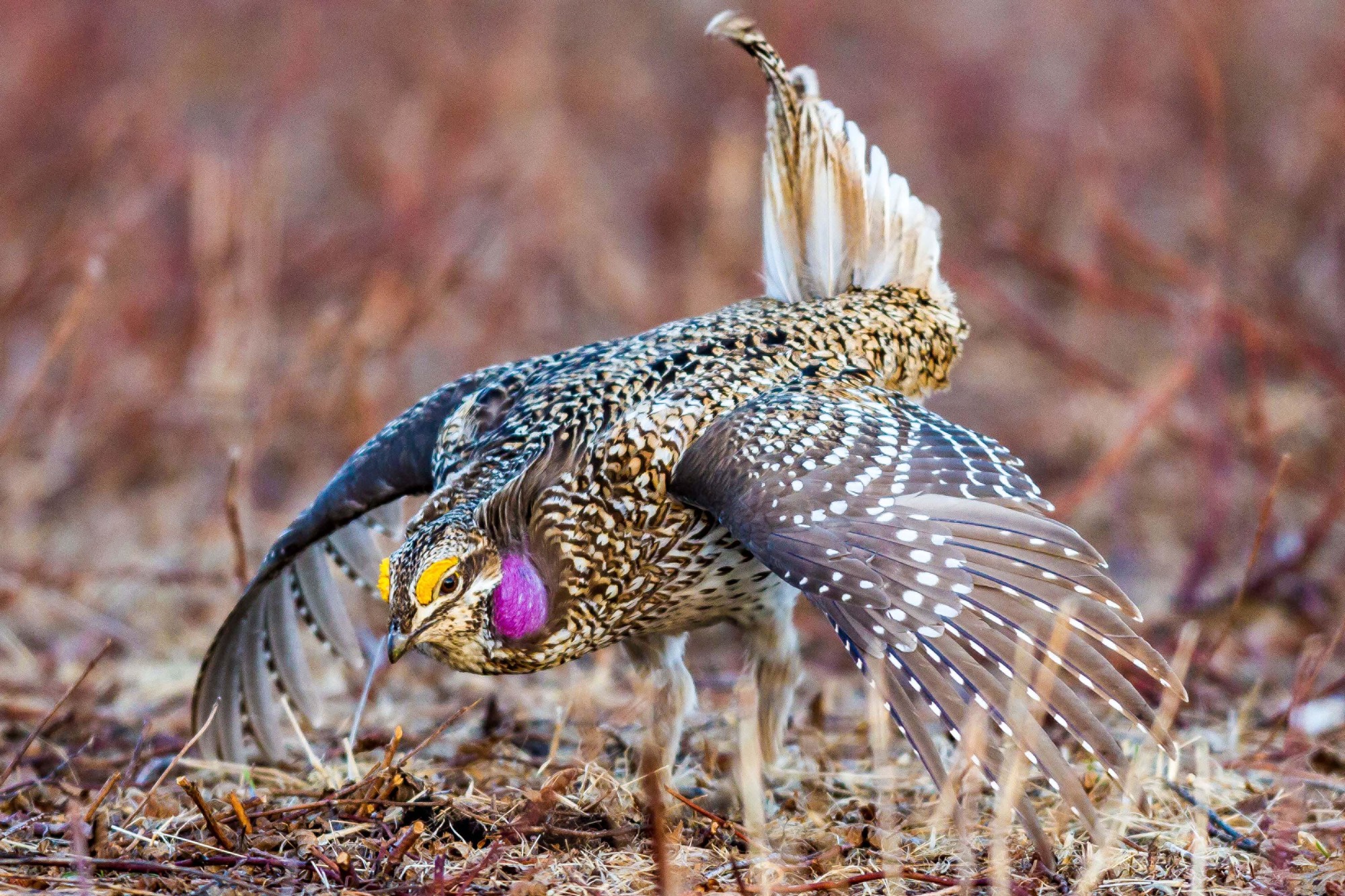|
Aug. 22, 2017
Contact: David Jentoft 906-635-5281, ext. 56171 or John Pepin, 906-226-1352
Michigan Sharp-tailed Grouse Association to hold annual meeting/field trip in Chippewa County
The Michigan Sharp-tailed Grouse Society will host its 2017 annual meeting next week in the eastern Upper Peninsula.
 “During this interesting session, sharp-tailed grouse management experts will offer presentations on grouse management and population status in the eastern Upper Peninsula,” said Al Stewart, DNR upland gamebird specialist and program leader. “We will also be visiting some important Hunting Access Lands and sharp-tailed grouse management areas.” “During this interesting session, sharp-tailed grouse management experts will offer presentations on grouse management and population status in the eastern Upper Peninsula,” said Al Stewart, DNR upland gamebird specialist and program leader. “We will also be visiting some important Hunting Access Lands and sharp-tailed grouse management areas.”
The meeting will begin at 9:30 a.m., Friday, Aug. 25 at the Bruce Township Hall, 3156 East 12 Mile Road, in Dafter. Dafter is located near the intersection of I-75 and M-28, just a few miles southwest of Sault Ste. Marie.
Presenters will include Marty Sarrault, president of the Michigan Sharp-tailed Grouse Association, A.R. Gregory Corace III, of the U.S. Fish and Wildlife Service, Al Stewart, DNR upland gamebird specialist and program leader and David Jentoft, a DNR wildlife biologist at Sault Ste. Marie.
In the eastern U.P., Chippewa and Schoolcraft counties have the highest densities of sharp-tailed grouse populations, followed by Mackinac and Alger counties with medium density and Luce and Delta counties, with low densities.
The grouse are rarely found in the western U.P.
“The eastern Upper Peninsula is where hunting is allowed for sharp-tailed grouse and the discussions and field trip at this meeting will help showcase those opportunities,” Jentoft said.
The Michigan Sharp-tailed Grouse Association is working to recruit new members in the U.P. interesting in conservation efforts.
The association partners with the DNR, and several other conservation oriented entities, in performing spring lek surveys. Leks are gathering areas where grouse display and conduct mating activities.
In addition, the association participates in short-term and long-term management activities including the establishment and regulation of hunting seasons, the possible translocation of sharp-tailed grouse into areas of suitable habitat, and offering assistance in the development of management areas on public and private lands.
“In order to expand our spring lek survey efforts and otherwise promote on-the-ground management efforts either through the Michigan Natural Resources Trust Fund (acquisition and/or development), the Michigan Wildlife Habitat Grant program or any other prospective activity, it is essential that we are able to generate interest in the Michigan Sharp-tailed Grouse Association from local folks interested in wildlife management,” said Bruce Basom, of the Michigan Sharp-tailed Grouse Association.
Many of the association’s members live in the Lower Peninsula, a good distance from where the sharp-tailed grouse management activities are taking place in the eastern U.P.
“By securing some younger and sufficiently motivated local wildlife enthusiasts, it is likely that we could better effect management efforts for sharp-tailed grouse and other early seral (transition) stage forest game and non-game birds and animals within the U.P.,” Basom said.
For more information on the Michigan Sharp-tailed Grouse Association, visit www.michigansharptails.wordpress.com.
To find out more about upland gamebird hunting in Michigan, visit the DNR’s webpage at: www.michigan.gov/hunting.
The Michigan Department of Natural Resources is committed to the conservation, protection, management, use and enjoyment of the state’s natural and cultural resources for current and future generations. For more information, go to www.michigan.gov/dnr.
|

 “During this interesting session, sharp-tailed grouse management experts will offer presentations on grouse management and population status in the eastern Upper Peninsula,” said Al Stewart, DNR upland gamebird specialist and program leader. “We will also be visiting some important Hunting Access Lands and sharp-tailed grouse management areas.”
“During this interesting session, sharp-tailed grouse management experts will offer presentations on grouse management and population status in the eastern Upper Peninsula,” said Al Stewart, DNR upland gamebird specialist and program leader. “We will also be visiting some important Hunting Access Lands and sharp-tailed grouse management areas.”




